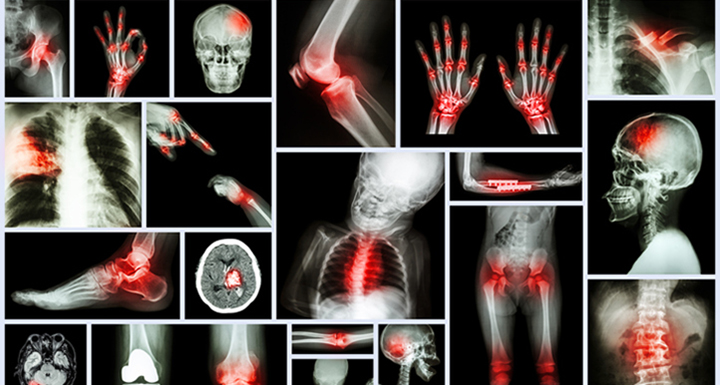You’ll often hear older adults complaining about aching and soreness in their joints, even when doing tasks that don’t seem that strenuous. Medical experts estimate that nearly 50% of seniors get a diagnosis with a form of arthritis, making it a condition directly associated with aging. While it can occur to anyone regardless of their age, the majority of cases arise in those over 65. Of course, the correlation between aging and arthritis makes complete sense as with time you are subject to more wear and tear.
Arthritis is the inflammation of one or two joints and can prove to be very painful. Some cases of the condition may affect other areas of the body like bones, muscles, and internal organs that might later result in enervating, even life-threatening complications. When left undiagnosed and untreated, this condition may contribute to lasting or irreversible damage.

Types of Arthritis
Osteoarthritis and rheumatoid arthritis are the most common types of arthritis. However, there are many other kinds.
Osteoarthritis
Osteoarthritis is also known as degenerative osteoarthritis is the result of wear and tear. The pressure of gravity damages the joints along with surrounding tissues, which will ultimately cause inflammation, pain, tenderness, and minimized function. Essentially, the bones begin to rub together as the cartilage gets worn down.
Osteoarthritis is initially non-inflammatory and has a subtle and gradual onset, which, in most cases, consists of one or only a few joints. The knees, hips, hands, and spine are the joints that osteoarthritis impacts the most. Similar to other types, the potential risk of osteoarthritis accelerates with age. Being overweight, having joint trauma, and repetitive joint use are other risk factors for osteoarthritis. This type of arthritis generally worsens as the day progresses.

Rheumatoid Arthritis
Rheumatoid arthritis is an autoimmune disorder that is chronic and potentially crippling. It arises when the body’s disease fighting capability is misdirected and mistakenly attacks the cell lining inside the joint called synovium. The synovial membrane swells up and inflames, and some may also experience bone erosion. RA will start steadily with subtle symptoms, making an early diagnosis difficult.
Studies have linked this type of arthritis to a genetic predisposition. This is more common in women than in men and is more serious and painful than osteoarthritis. Rheumatoid arthritis impacts the whole body while osteoarthritis generally only affects the joint itself. Unlike osteoarthritis, RA is worse in the morning and the pain can last for over half an hour, making it difficult for those suffering from it to begin their day in a timely manner.
Juvenile Arthritis
Goodbye to the misconception that arthritis and joint problems only occur in elders! While juvenile arthritis is not a disease in itself, it is known as pediatric rheumatoid arthritis. In other words, it’s rheumatoid arthritis (autoimmune and inflammatory) that’s specific to kids and youngsters. The warning signs and arthritis symptoms may vary.
The condition has three main types: polyarticular, which impacts many joints, pauciarticular, which pertains to only some joints, and systemic, which affects the entire body. Because no single test can conclusively establish a diagnosis, juvenile arthritis should continually be existing for six or more weeks prior to a proper diagnosis. The cause for juvenile arthritis is unclear, but experts believe that these children have a genetic predisposition.
Psoriatic Arthritis
Psoriasis is a skin and autoimmune condition that can exist without arthritis, but together, they are known as psoriatic arthritis. Psoriasis causes the skin to have patches of silver-colored scales or flakes. People usually develop psoriasis first and are subsequently diagnosed with arthritis. In this type of arthritis, a patient may suffer from joint inflammation and often inflammation of the spine. As there is no cure, the focus is on managing the symptoms to prevent it from getting worse and wreaking further damage.
Gout
Gout is a type of arthritis that is painful and may bring about sudden and severe attacks of pain, redness, warmth, and joint inflammation (particularly in the big toe). Simply put, the cause of this condition is too much uric acid in the joint. Uric acid crystals that precipitate out of the blood and are deposited in the joint are responsible for triggering pain and swelling. This is often due to a diet high in uric acid, such as organ meats, gravy, or beer.
Fibromyalgia
Fibromyalgia syndrome can affect someone in various ways. It causes insomnia, fatigue, headaches, memory and cognitive issues, vision problems, nausea, pain in muscles, skin problems, restless leg syndrome, and of course, joint pain. Though it’s separate from arthritis, some may confuse fibromyalgia with arthritis due to the joint pain.
Arthritis symptoms
As you are aware by now, there are many of different types of arthritis. Meaning there are also a myriad of arthritis symptoms that are indicative of the painful condition. However, with basic knowledge of the most common types of arthritis, you will have no trouble recognizing the symptoms.
Joint pain
One of the most common symptoms is a persistent joint pain, which can occur anywhere in the body. However, in most instances, you will feel it in the location of your joints, like your elbows, knees, etc.
Tenderness and soreness
A sign of arthritis is pain or tenderness in your joints, particularly if you feel that moving or activities such as going for a walk, rising from a chair, or even throwing a ball agitates it.
Decreased range of motion
This decrease in range of motion is also congruent with redness, swelling, and stiffness in the joints and the surrounding areas. The swelling and redness are especially common with rheumatoid arthritis.
Symmetry
For many types of arthritis, symmetry can be a sure indicator. In contrast to pain in one hand, joint pain in your left hand and right hand may, for instance, indicate a higher possibility that you do have arthritis.
Sourced from: healthliving.today
Featured Image Source: Thinkstock/stockdevil









